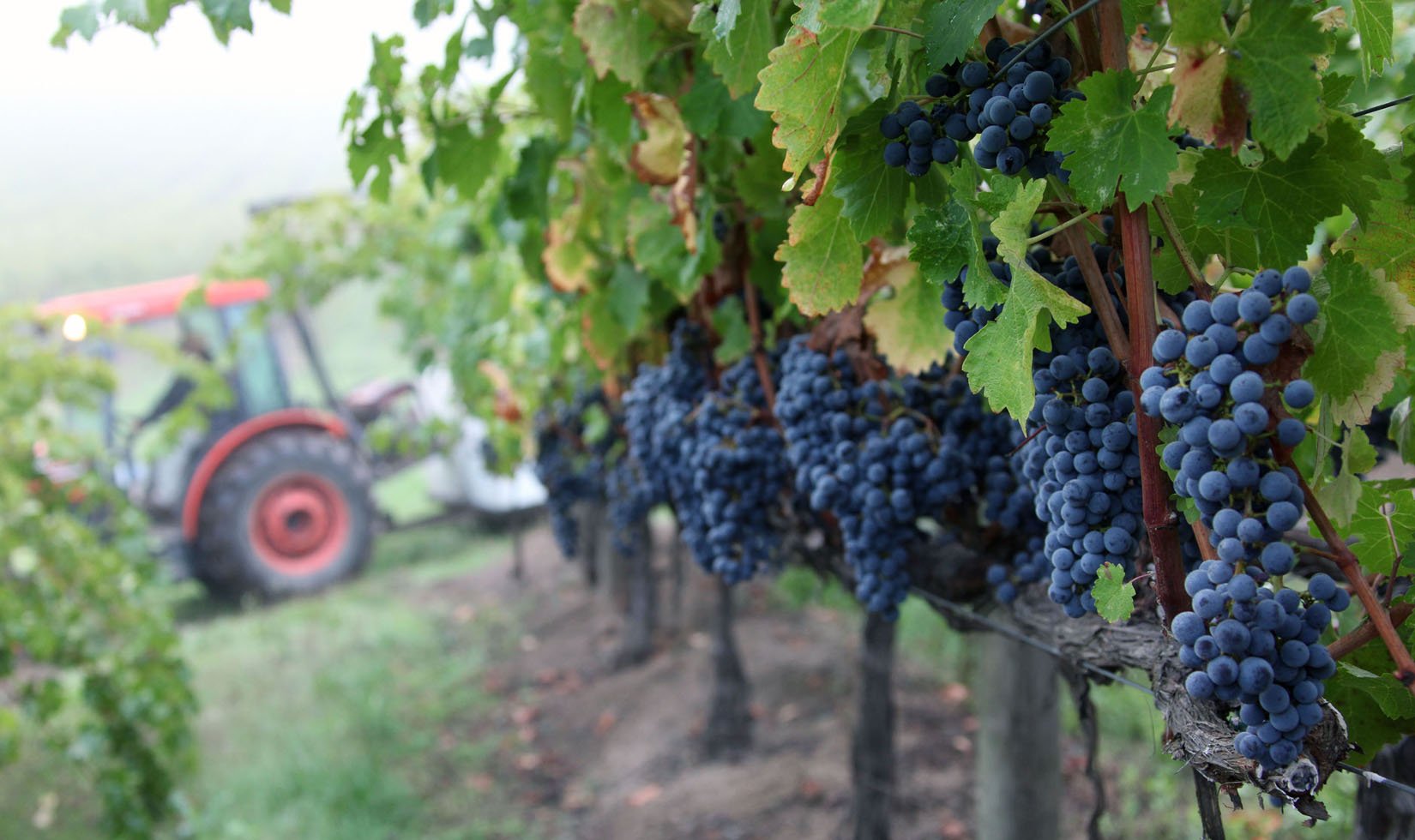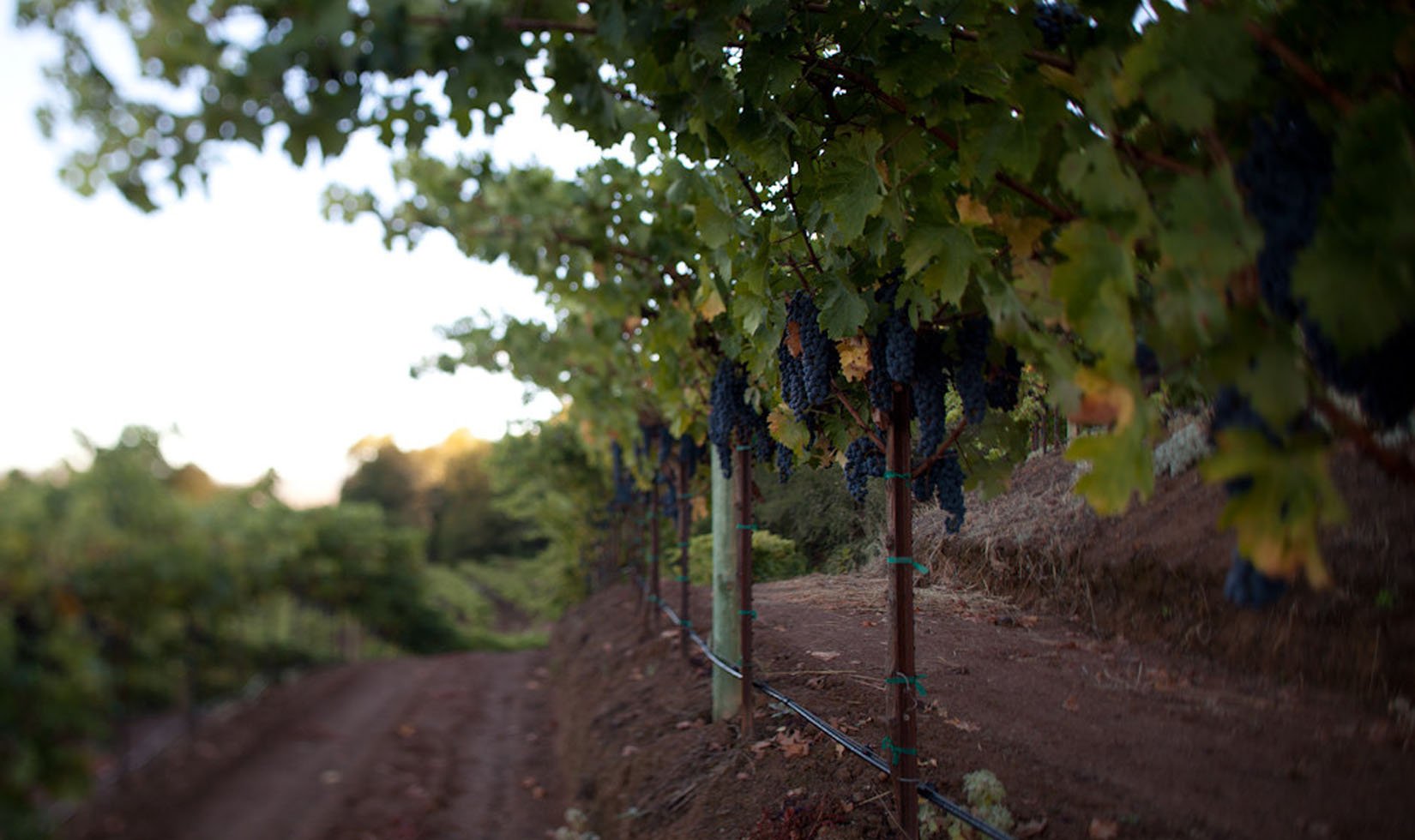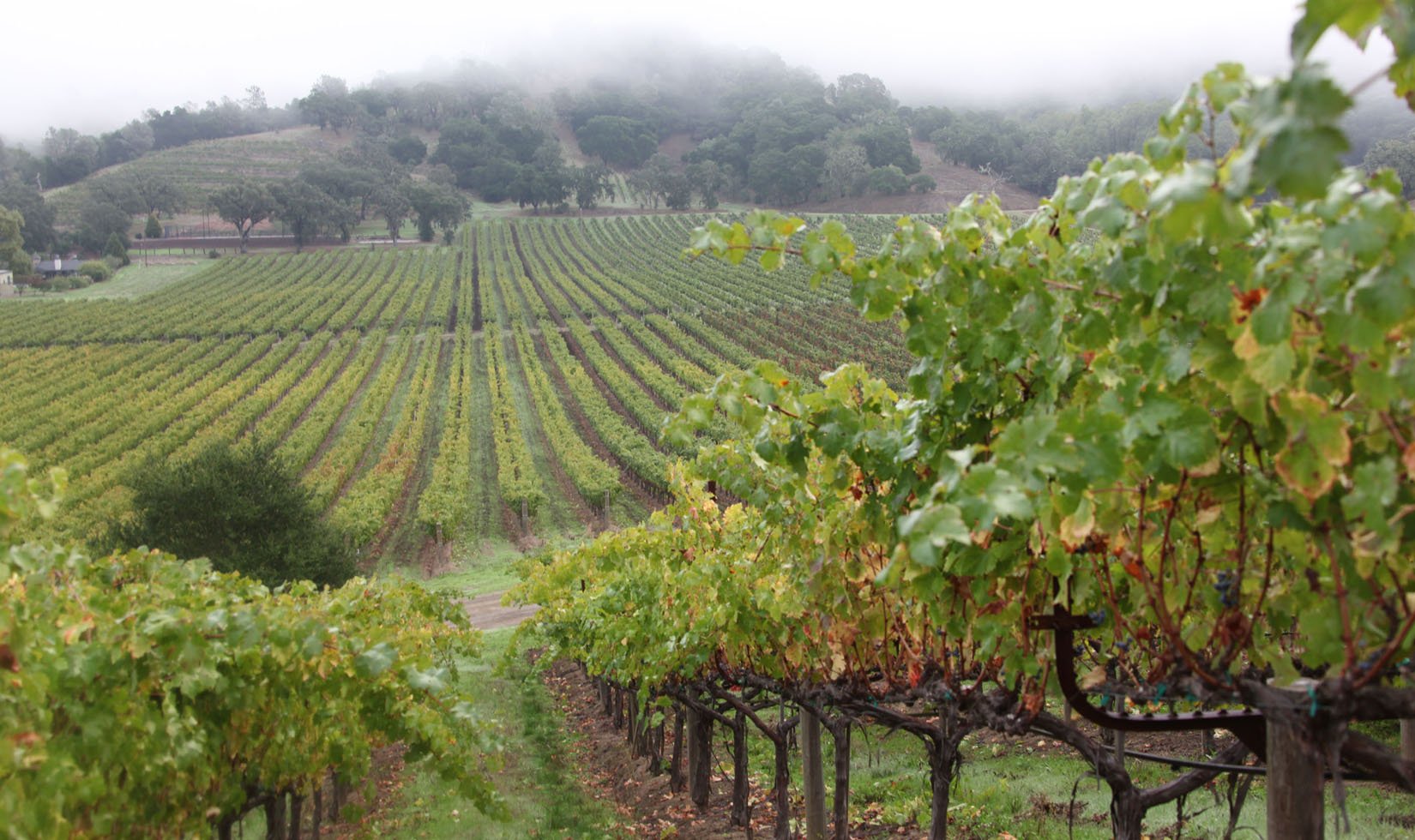Harvest is the most exciting (and humbling) time of the year for a winemaker. At Jordan, we do not like to think of vintages in terms of good or bad—only that each vintage requires attention to areas of wine growing and winemaking that vary from year to year. The 2011 vintage was one of those challenging years where empirical wisdom and agility were needed to overcome the obstacles Mother Nature handed us. Another winemaker asked me how our harvest was going, and I replied, “I had to use all 36 years of experience to make quality wine this year.” Here’s a summary of what made the 2011 vintage so challenging and how we were able to overcome those obstacles to craft elegant wines.
2011 Vintage Report: Smaller Crop due to Cool Weather
Vintage 2011—which we’ve dubbed the “vintage of the long faces” due much in part to low yields for grower and winery alike—crossed the finish line at Jordan October 27 bathed in an autumn glow that even made my visiting cousins from Vermont jealous. In 2011, the beauty of fall welcoming wine country visitors surely comes at a price to the farmer. The two events that marked the vintage–the untimely rain at bloom, which affected fertilization, and the untimely rain showers in October–resulted in an overall 35% reduction in crop for us. Almost every grower I know suffered at least a 20% drop in average yield and some as much as 50%. But this year’s fruit has vivid aromas of cherries, strawberries and blackberries with nice, firm acidity to frame the fruit. Tannins are not quite as broad as last year—definitely softer and surprisingly pleasing for such a young wine.
2011 Vintage Report: Making Quick, Adaptive Farming Practices
So how did we beat the odds to make solid 2011 wines? We used every resource available to analyze situations in each vineyard and react swiftly to preserve the integrity of the grapes’ flavors. Waiting to respond to prevailing harvest conditions would definitely have put us in a high-risk venture. Preparation and quick action were required immediately at the spring flowering of the vines in May. Changes in canopy management, fruit dropping from weak shoots, additional leafing and green fruit removal (veraison thinning) in August only added to the diminished returns from Mother Nature. But mediocrity has no place in making great wines so diligent effort needs to be made on all levels.

2011 Vintage Report: Rain and Humidity During Harvest
The two rains early October set the table for the rest of the vintage. Luckily, our Chardonnay and most of our Merlot slid into our presses and tanks just before the initial drops of rain began on October 4—and I mean just before. We actually had to cover our Merlot gondolas with tarps next to the crushpad as the sprinkles began to fall. It was a huge relief. The 2011 Chardonnay had beautiful acidity and pure stone fruit flavors, as it was spared exposure to heat spikes this year.
After those game-changing rains, some vineyards reached their water-holding capacity. Even though the remaining days of harvest were warm, the nights were progressively colder, and with minimal wind, and shorter days of sunshine, sugar accumulation of the grapes in most areas peaked and did not appreciably change for the rest of October. Areas that received more rain and soils with higher water holding capacity were challenged by the aforementioned conditions, and unusual humidity, which favored the growth of mold on the grapes. Our efforts were completely focused on harvesting the remaining fruit to avoid fruit collapse from the rapid growth of mold, beginning with Petit Verdot on October 13 and Cabernet Sauvignon on October 14. (Scenes from harvest with the Munselles, captured in the above video, brought a smile to my face during a hectic time: Wine growing is truly a family business.) We finished harvesting from our last grower October 27, almost one month to the day when we began. Average Brix of 23.3 is indicative of our pursuit in crafting an elegant, balanced Bordeaux style of Cabernet. 2011 Jordan Cabernet will be no exception to other vintages—only exceptional when it reaches your glass.




